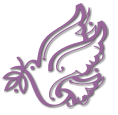Unlike their European counterparts, the Basque, Spanish and Portuguese nobility, did not inherit but earned their nobility almost entirely in the field of battle.The Basque heritage is filled with noble families who fought their way to their ranks.
Originally the Coat of Arms was used as a means of identifying individuals, who in battle would be clad in armor from head to toe and would barely be recognizable as "friend" or "foe." They needed a distinctive insignia to be painted in their shields, embroidered on their surcoats, flags, etc. - for instant recognition. Because they served as graphic representations of the individual's heroic deeds, as well as their identity in battle, the coat of arms soon became jealously guarded objects of pride. Over the centuries, the use of the coat of arms became less a matter of need and more of status.
At some point in a genealogical study, the question arises: "Does our family have a coat of arms?" But Coat of Arms were granted to specific individuals and never to families or family names. Just because there is a coat of arms identified with a surname it doesn't necessarily mean that a person with that surname is a relative of the owner or is entitled to use it. And although a son could inherit his father's coat of arms and carry them into battle with pride, this continuation is not always guaranteed.
While there is no such thing as a "family" coat of arms, there is nothing wrong in displaying an ancestor's coat of arms, as a symbol of a family's heritage, just like a heirloom belonging to someone in the family. Traditionalists believe that no one has a right to display them unless they can demonstrate that they are actual descendants of the person it represents. Indeed, in one particular country the unauthorized use of a coat of arms is a criminal offence similar to forgery.
Having said all that, (and without any wish to undermine the accomplishments of the individual who owned the coat of arms) I am going to sacrifice "accuracy" or "correctness" and display them in the context of family name history.
It is in this spirit that the Ursua Coat of Arms is presented here. |









